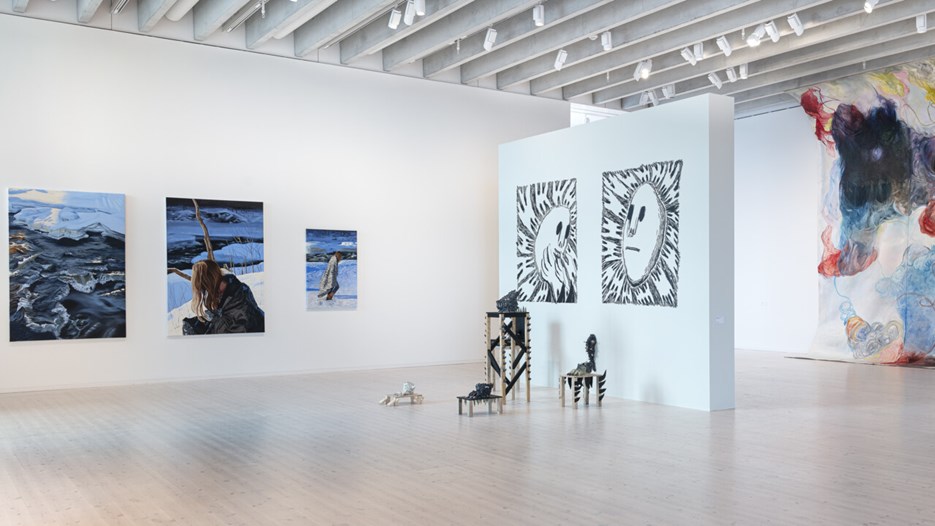
Live is Life / Umeå Academy of Fine Arts Degree show. Photo: Mikael Lundgren.
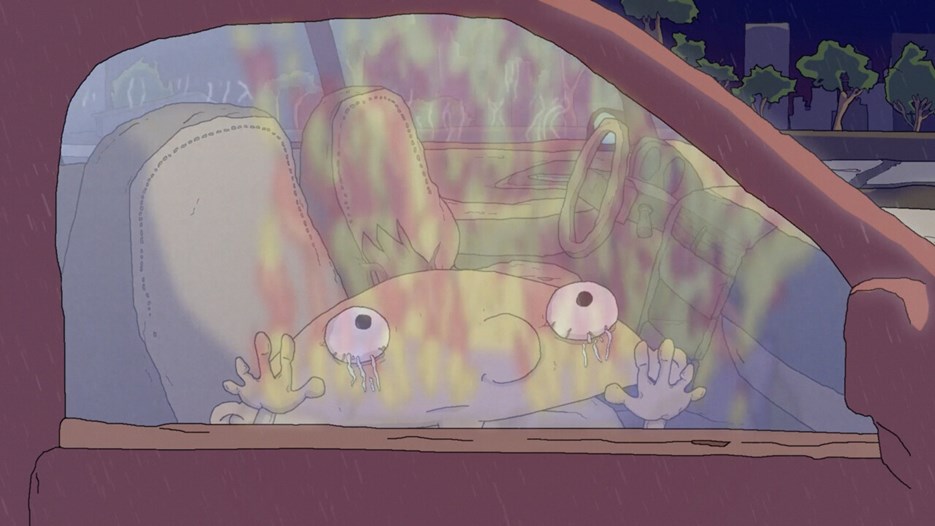
Oscar Häggström, Did You See Me Yesterday? (film still), 2022
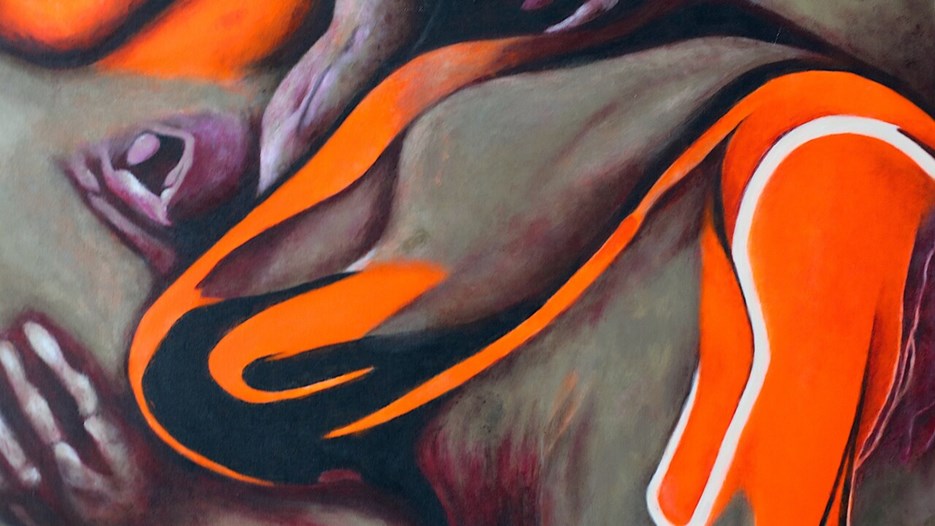
Live is Life / Umeå Academy of Fine Arts 2022 / Gabriella Novak
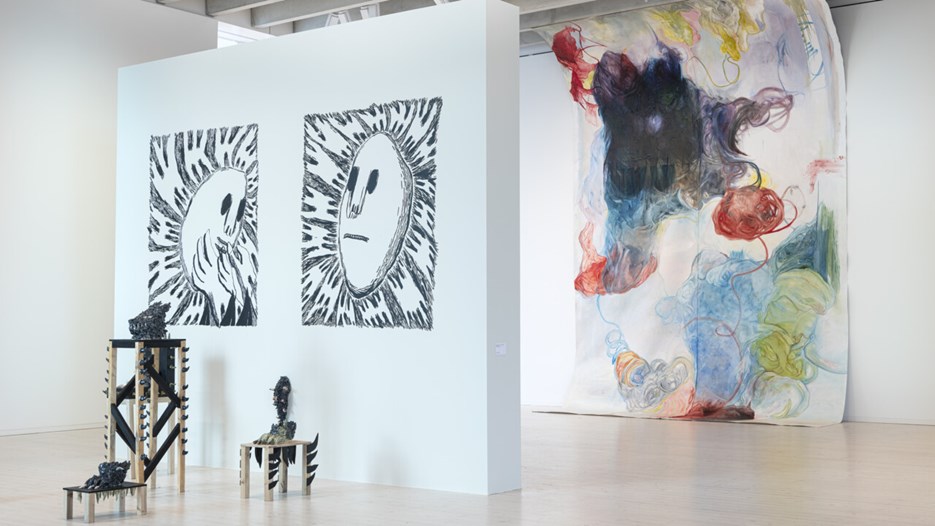
Ellen Macke Alström / Tiger Lost in Västerbotten and Désirée Burenstrand Schyman / Unspecified Ritual. Photo: Mikael Lundgren
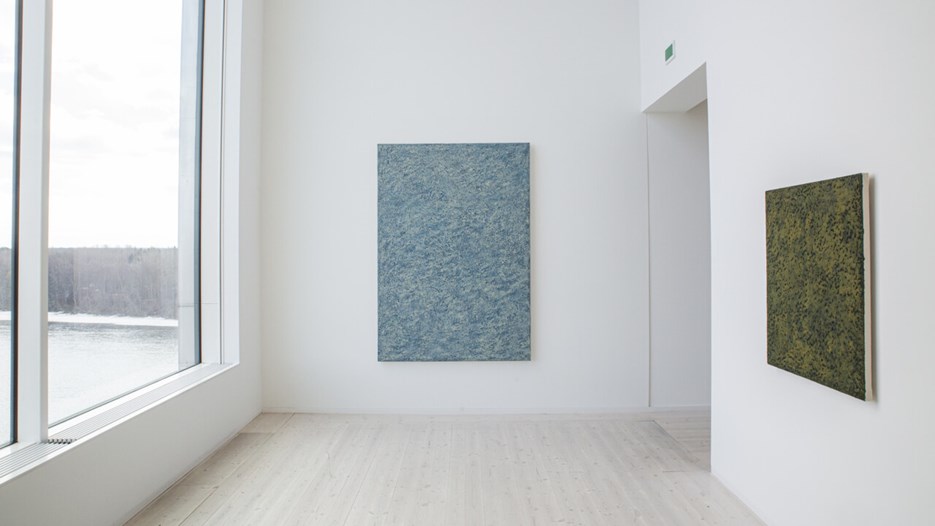
Christoffer Mahlknecht / Endogen / Exogen. Photo Erik Hillbom
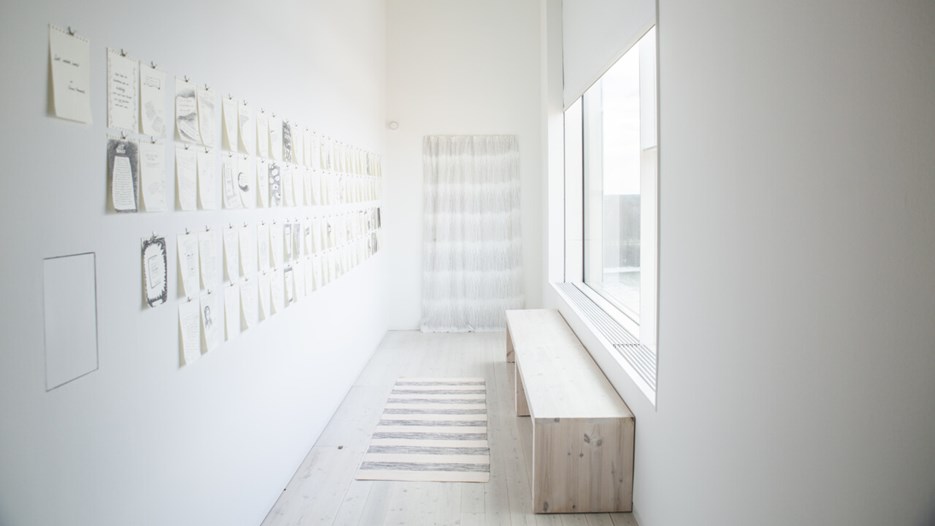
Susan Karavelli / The Dark Threat. Photo: Erik Hillbom
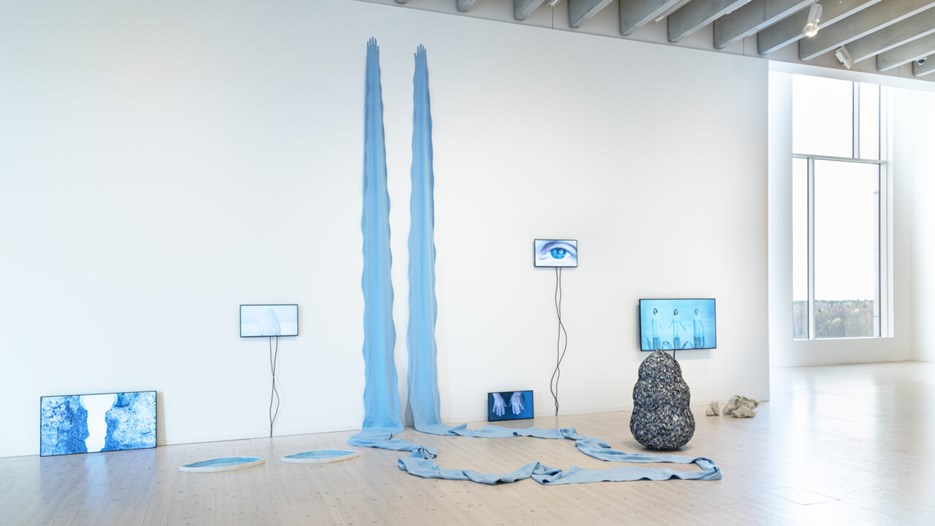
Anastasia Savinova, We Swim in One Water, 2022. Photo: Mikael Lundgren
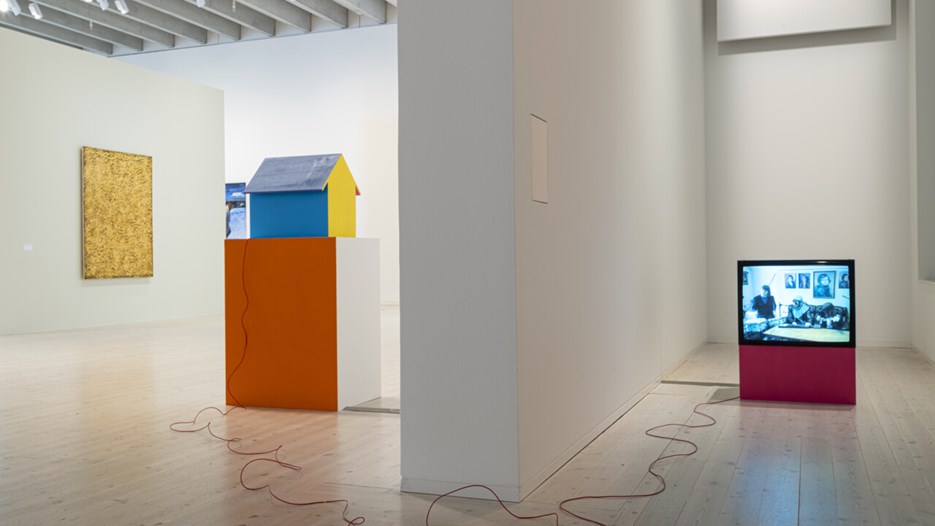
Olga Gniadzik, A Very Big Top 10 Babies Show / Gig in the Living Room of a Very Small / Tiny House, 2022
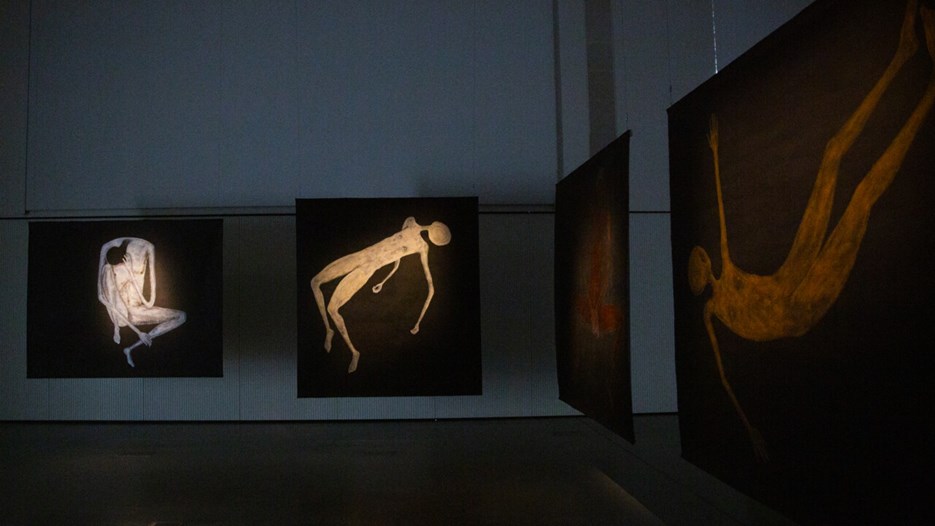
Abdullah Mohammad / The Fall
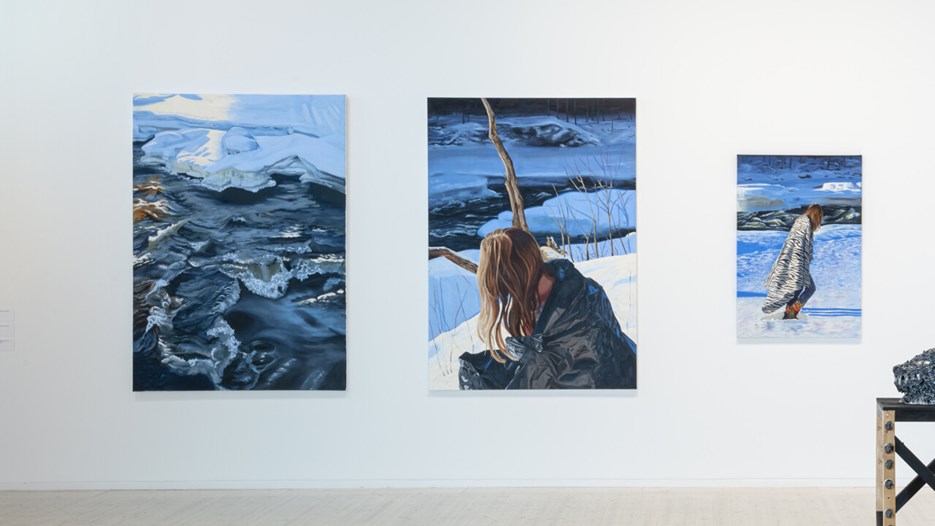
Therése Lundin / Vindeln / The Guide / Disguised as Birch. Photo: Mikael Lundgren
This year’s degree show, Live is Life from the Umeå Academy of Fine Arts at Umeå University presents works by Désirée Burenstrand Schyman, Olga Gniadzik, Oscar Häggström, Susan Karavelli, Therése Lundin, Ellen Macke Alström, Christoffer Mahlknecht, Abdullah Mohammed, Gabriella Novak and Anastasia Savinova, all of whom are graduating from the Master’s Programme in Fine Arts. Curator and their principal supervisor is artist and professor Annika Eriksson, Umeå Academy of Fine Arts. Curators Words.
The degree show at Bildmuseet is the culmination of five years of study in fine art and a time of intensive work, research, and discussion. During the master’s programme, students will have developed their artistic practice and explored the history and contemporary social relevance of art and its current themes and status. As a visitor, the exhibition offers you insights into the discourse on contemporary art and studies of its techniques and materials.
LIST OF ARTWORKS
Désirée Burenstrand Schyman (b. 1973, Stockholm, Sweden)
Unspecified Ritual
Oil on canvas
For Désirée Burenstrand Schyman, the act of painting is performative and exploratory. Her work investigates concepts such as pain as a phenomenon, how it seems to arise and thus becomes intimate, a distinctive space that can only be described by the person within it.
Using painting as installation, Burenstrand Schyman adopts a phenomenological perspective on both inner and outer spatiality and their inherent properties, allowing her work to explore the properties of specific places, the material and embodiment of a substance such as water or of a concept such as sensibility. It also asks the question: Can what we are, be something else?
Olga Gniadzik (b. 1996, Warsaw, Poland)
A Very Big Top 10 Babies Show / Gig in the Living Room of a Very Small / Tiny House
Installation, video
48.46
Olga Gniadzik works in various mediums, including painting, music, sculpture, performance and photography. Since 2021, she has been performing with Dani Liljedahl and Erik Höglund as Top 10 Babies. The band is interested in the combination of wit, silliness and playfulness. Their chaotic good energy is finally organically channelled into a mash-up of music, performance and art.
The installation A Very Big Top 10 Babies Show / Gig in the Living Room of a Very Small / Tiny House is inspired by Gniadzik’s fondness for miniatures, absurdity and fun. As the title suggests, the artwork consists of a small house from which one can hear the muffled sound of a Top 10 Babies performance, and a television on which one can watch the band performing inside the tiny home.
Video and sound recorded and mixed with the help of Erik Höglund, Dani Liljedahl and Petter Olofsson.
Oscar Häggström (b. 1993, Gothenburg, Sweden)
Did You See Me Yesterday?
Video installation: animation, video, wood, fabric, cinema chairs
24 minutes
Through large installations, using symbols and figures from popular culture, Oscar Häggström creates cartoons that when combined with projections, sound and music form a world of images of recognition and issues encompassed by the subject. The video installation Did You See Me Yesterday? is a collage of different stories intertwined into a larger context around how we view identity in a new dynamic, increasingly digital world.
Animation has always been the foundation of Oscar Häggström’s artistic practice. It has helped him tell stories and, by doing so, attempt to approach, analyse and understand our time. According to him, we can understand our era by showing and observing the modern technology that surrounds us. How do we use modern tools to shape our emotions in contemporary society, and how do they shape us?
Susan Karavelli (b. 1965, Istanbul, Turkey)
The Dark Threat
Drawings on paper
I leave no trace but the traces do not leave me
Drawing on the wall
The work of Susan Karavelli is often narrative, and not infrequently autobiographical. At Bildmuseet, she is exhibiting a series of drawings. In the series The Dark Threat, she uses personal reflections in words and pictures, brief factual texts and transcriptions of real, fictional and semi-fictional documents to analyse a story that played out one year ago against the backdrop of contemporary tendencies.
The step from calligraphy to drawing is not long; both leave traces of the hand’s movements and a highly personal, physical presence that is important to Karavelli. This allows her to insert herself into her work, finding her place there more easily than she does in the real world. Rather than self-absorbed, here autobiography is an existential necessity.
Therése Lundin (b. 1986, Stockholm, Sweden)
Vindeln
The Guide
Disguised as Birch
Oil on linen
Therése Lundin’s paintings depict simple scenes and figures describing states in which atmosphere and detail combine to capture the frozen moment. In much the same way as we can belong to something distant yet be frozen in our own time.
For Lundin, painting is a tool for introspection and a means of relating to the world around her and existence. In the paintings she exhibits at Bildmuseet, the artist explores the river and its nearby surroundings as a symbol of the transformation from culture to nature. It is a study of seclusion and fellowship, power and magic. Lundin writes:
The reconstruction of an image allows it to be at once foreign and familiar. That something violent and overwhelming can paralyse us, but also permit itself to be transfigured into an opportunity. To lose respect for something so that we do not have to stand powerless before it. To acknowledge that life is trifling and fleeting, but to refuse to know our place.
Ellen Macke Alström (b. 1989, Falköping, Sweden)
Tiger Lost in Västerbotten
Ceramic, wood, mural
Ellen Macke Alström’s art examines and recounts scenes from everyday life; conversations, emotions and events are given character, their own bodies and words, their own worlds to move in. Tiger Lost in Västerbotten deals with sensing the strength and vulnerability in one’s flock and in oneself, here revealed in ceramic, wood and mural.
With a background in drawing and taking inspiration from other storytellers in literature, cinema and art, Macke Alström has begun to investigate materials such as textile, ceramic and wood. In this way, she hopes to wade deeper into the stories, lift her drawings out into the space and put on a show.
Christoffer Mahlknecht (f. 1987, Stockholm)
Endogen / Exogen
Oil and beeswax on canvas
In his abstract paintings, Christoffer Mahlknecht examines material processes. By heating oil paints with beeswax, he creates crayons that give the paint a multilayered structure. The crayons are heated by friction, flowing out over folds and cavities before solidifying in a crust. In the series Endogen / Exogen, his paintings are a constant dialogue between what is and what was. A pendulum movement in time and space.
Mahlknecht approaches painting in an open process of retakes and deferrals; traces and fragments of light and shadow are applied, scraped and buried, only to be resurrected with new power, at a new time, through cracks and holes in what was.
Abdullah Mohammad (b. 1990, Damascus, Syria)
The Fall
Installation: acrylic on canvas, bronze sculpture, sound
5–8 minutes
The outbreak of war forced Abdullah Mohammad to leave Syria for Sweden. His journey took him through many countries with distinct cultures and languages, creating an emotional space between past and present, as well as a sense of the future. Sweden became a special experience with its different way of life, its tranquil nature and long, cold winters, none of which he was accustomed to.
The long periods of isolation helped him delve deeper into the meaning of human feelings and emotions in their various forms, and this is what we find in his artwork. In The Fall, he expresses his personal experience through feelings in the form of human bodies with expressive touches floating in the subconscious space. Not all feelings are known, and the artist sees our common conceptions as insufficient for understanding them. A work of art, he says, can portray emotions more realistically and show the special value of feeling different from the rest.
Gabriella Novak (b. 1982, Paczków, Poland)
AI-generated image 04
AI-generated image 34
AI-generated image 43
AI-generated image 51
Acrylic on canvas
Gabriella Novak is a multimedia artist. In their art, they uses digital tools – AI, algorithms, technology, robots and the internet – to resist the prevailing image of the body in technology and online, where representations of the body are invariably linked to consumption and gender as a product.
The work Novak exhibits at Bildmuseet is created using an AI text-to-image generator. Thousands of online images that have been reproduced, viewed, used and endlessly copied have been merged with the aid of an algorithm, then translated into physical paintings.
Novak’s work serves as a screen on which to project digital media content that reduces the representation of the female body to body parts. As the images materialise in the analogue world, the stereotyped bodies seize control, exuding lust, pleasure, erotic dreams and self-love.
Anastasia Savinova (b. 1988, Sverdlovsk, USSR)
We Swim in One Water
Installation: linen, mussel shells, stones of uncertain origin, water, video
Glacier Milk
Wax, porcelain
Drift (Outside)
Outdoor installation: wood on water
Anastasia Savinova’s multidisciplinary practice revolves around places, ecologies and human relationship with the ‘more-than-human world’. She investigates how everything is intertwined and how we are always emerging as a part of something greater.
The installation in and outside Bildmuseet is part of her ongoing project We Swim in One Water, that focuses on connectedness through water on geographical, biological, and spiritual levels.
The indoor installation consists of sculptures and video works, reflecting on a water journey through time on personal and planetary levels: from ancestral waters, through our bodies, and into the future. The installation also includes sculptures made from materials found on shorelines, charged with stories of swimming.
The outdoor piece is a text, floating on the river. The wavy shapes suggest images of driftwood, shaped and smoothed by waves.